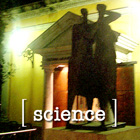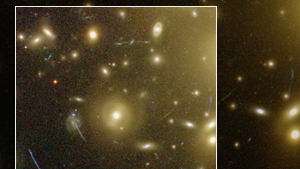
|
USING THE HIGGS FIELD, SCIENTISTS THEORIZE IT IS POSSIBLE TO CAUSE A 'BABY UNIVERSE' TO BREAK OFF FROM OUR OWN, SAFELY 2 August 2006 A radical new project could permit human beings to create a "baby universe" in a laboratory in Japan. While it sounds like a dangerous undertaking, the physicists involved believe that if the project is successful, the space-time around a tiny point within our universe will be distorted in such a way that it will begin to form a new superfluid space, and eventually break off, separate in all respects from our experience of space and time, causing no harm to the fabric of our universe. The project takes as its starting point two basic theories about the foundations of our universe: the big bang and inflation theory. The big bang theory, as many readers are well aware, observes that all objects in the known universe appear to be moving away from one another, suggesting that the universe was jump-started when all matter and energy were concentrated in an inconceivably tiny space, allowing them to overcome binding forces and causing a cosmic explosion. It is well-tested and consistent with all currently accepted models for general cosmology, as tested against advanced theoretical and observational physics. But it is only one piece of the puzzle. Inflation is a key theory, developed in 1981, when MIT physicist Alan Guth observed that there appeared to have been a period immediately following the big bang when the universe "inflated" rapidly, allowing distinct regions of matter and energy to function comfortably free from any forces that might cause them to collapse against each other or disrupt each other's evolution. This project is not exactly theoretical physics at work. It is closer to a physical application of observed phenomena, in combination, with the aim of achieving an as yet untested physical effect. Inflation theory helps provide the means of understanding how that effect might be brought about. As reported by the New Scientist: "Inflation theory, subsequently modified by Linde, relies on the fact that the 'vacuum' of empty space-time is not a boring, static place. Instead, it is subject to quantum fluctuations that cause strange bubbles to appear at random times. These bubbles of 'false vacuum' contain space-time with different —and very curious— properties." The space-time inside these false vacuums is organized and kept constant by a phenomenon known as the 'Higgs field'. It is believed that with the constant provided by the Higgs field, these bubbles of 'false vacuum' can be induced to withstand contact with the high pressure exterior vacuum and subsequently to expand through a kind of cosmic inflation like the one which followed the big bang at the beginning of our universe. The key is a monopole, a unique sperical particle with only a north or south pole, only one charge. Adding mass and energy to this already extremely dense particle, could cause it to expand "eternally", providing the trigger needed to make the bubble of false vacuum into an ever-expanding universe, akin to our own, but entirely separate and likely to develop its own physical properties, laws and materials. Here is the key to the "new universe" paradigm for the project. It would not be simply an extension of our own universe, a space where strange things happen. The New Scientist reports physicist Nobuyuki Sakai's discoveries regarding this process as follows: "[T]he baby universe has its own space-time and, as this inflates, the pressure from the true vacuum outside its walls continues to constrain it. As these forces compete, the growing baby universe is forced to bubble out from our space-time until its only connection to us is through a narrow space-time tunnel called a wormhole..." Eventually, the "umbilical" connection between our space-time and the baby universe would be effectively cut, and the baby universe would enter into its own unique process of unending expansion. From our perspective, it would be lost inside a microscopic "black hole", which will not appear to expand into our space-time. Hawking radiation will be emitted and the tiny black hole will "evaporate", sealing the separation between the two universes. Ultimately, this evaporation is what makes the project possible, but is also, perhaps, its most serious obstacle. It is expected that the separation between our space-time and the baby universe would occur so quickly, it might be impossible —within the limitations of our physical universe— to observe its having been created. [s]
BACKGROUND: The 'universe' we know as all-encompassing, the vague, probably never to be finally defined concept of the structure of physical reality, may actually be one of many such distinct self-contained, self-sustaining phenomena, with distinct physical properties and corresponding physical laws and tendencies, unified membrane cosmologies adrift in a 'superfluid' soup, at times colliding with incredible energy diffusion, creating whole new universes. [Full Story] GOV'T POLICY UNLAWFULLY CRIMINALIZES COMMENT ON SCIENTIFIC FACT The global environment is, of course, a global issue, one that touches every life on the planet, and the science about it should be open and available to all. Past government policy and existing federal law mean that such scientific evidence should be readily available to the public. But now, it appears that several agencies are laboring to silence scientists who are researching climate trends and alterations. [Full Story] SCIENCE SAYS EVOLUTION WORKS The journal Science, in selecting its breakthrough of the year, decided to feature a series of scientific advances demonstrating how evolution works. At the end of a year that has seen a growing marginal movement in the US to displace evolution as mere conjecture in favor of the untested, religiously based "intelligent design" argument, Science intends to proactively defend science, as such. [Full Story] |
||||||||||||||||||||||||||
|
|||||||||||||||||||||||||||









